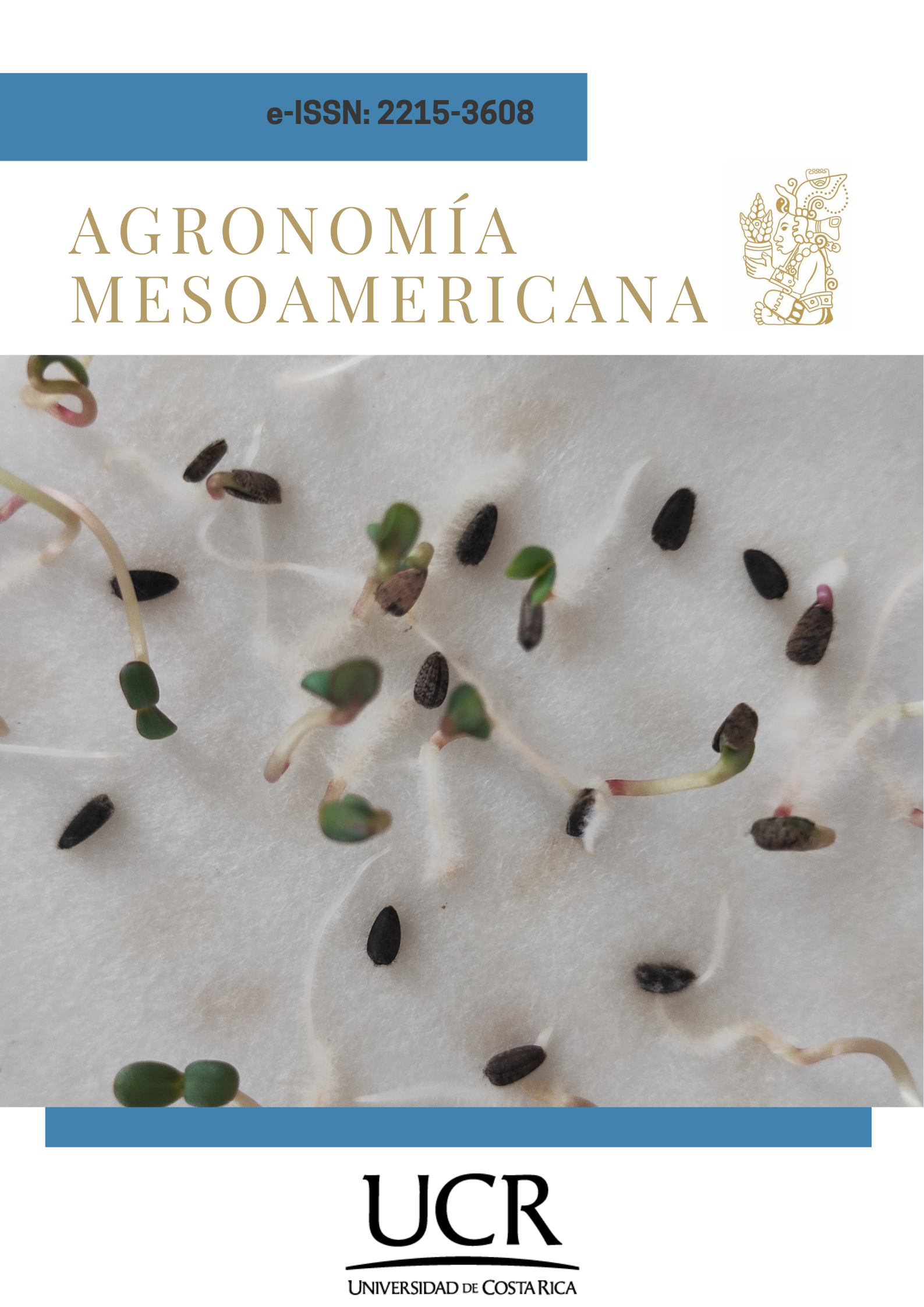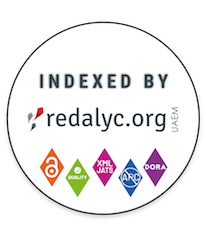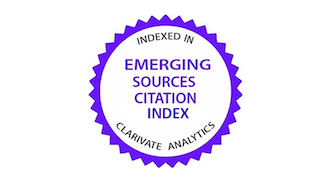Obtaining wild sunflower (Helianthus annuus L.) plants for bioassays with herbicides
DOI:
https://doi.org/10.15517/am.2024.59522Keywords:
seed dormancy, broadleaf weed, prehydration, polocoteAbstract
Introduction. The wild sunflower or polocote (Helianthus annuus L.) is the main annual weed in the cultivation of sorghum and corn in northern Tamaulipas, Mexico. To date, there is little information about this species to carry out bioassays with herbicides. Objective. Establish a methodology for obtaining polocote seedlings for bioassays with herbicides, from seed to multiplication in the nursery. Materials and methods. The polocote seed was collected in January 2023, within the National Institute of Forestry, Agriculture and Livestock Research (INIFAP) Experimental Field, in Río Bravo, Tamaulipas. Afterwards, the initial germination test was carried out on filter paper and viability with tetrazolium. Latency was confirmed due to low germination (12 %) and high viability (86 %). Twelve treatments were used to break dormancy using ethanol (70 %) and water (75, 25). As a control only water were used. The treatments were applied at temperatures of 5 °C and 20 °C, on filter paper, cotton, and peat moss in Petri dishes for seven days. Subsequently, they were kept at a temperature of ±25 °C. With the previous results, the nursery phase was established with four schemes with pre-germinated seed transplantation and two with direct sowing. Results. The best treatment to break dormancy was immersion in water at 5 °C for seven days on cotton, with 73 % germination. The best methods to obtain plants were trays with seedlings and transplanting into black open-air pots, with 75 % and 50 % survival, respectively. Shade inhibited plant growth. Direct sowing, with or without seed prehydration, was unfavorable for germination and emergence. Conclusion. Obtaining wild sunflower seedlings was higher when the seed was subjected to water pre-treatment and subsequent transplanting into trays or open-air bags.
Downloads
References
Alejandro Allende, F., García Mata, R., García Sánchez, C., Mora Flores, J. S., & Sangerman Jarquín, D. M. (2020). Competitividad de la producción de sorgo en el norte de Tamaulipas, México. Revista Mexicana de Ciencias Agrícolas, 11(1), 139–150. https://doi.org/10.29312/remexca.v11i1.1914
Baucom, R. S. (2019). Evolutionary and ecological insights from herbicide-resistant weeds: what have we learned about plant adaptation, and what is left to uncover? New Phytologist, 223(1), 68–82. https://doi.org/10.1111/nph.15723
Bentivegna, D. J., Gabriela, G. L., Daddario, J. F. F., & Tucat, G. (2017). Determination of optimal doses of glyphosate for controlling weeds at several stages in southwestern Buenos Aires province (Argentina). Journal of Plant Protection Research, 57(4), 347–354. https://doi.org/10.1515/jppr-2017-0047
Bolaños-Jiménez, J., Uscanga-Mortera, E., Tafoya-Razo, J. A., Kohashi-Shibata, J., & Torres-García, J. R. (2018). Efectividad biológica de herbicidas inhibidores de la acetil coenzima a carboxilasa y acetolactato sintasa y la presencia de resistencia en Echinochloa crus-galli (L.) Beauv. Agrociencia, 52(5), 713–723. https://www.agrociencia-colpos.org/index.php/agrociencia/article/view/1699/1699
Burgos, N. R. (2015). Whole-plant and seed bioassays for resistance confirmation. Weed Science, 63(SP1), 152–165. https://doi.org/10.1614/WS-D-14-00019.1
Burgos, N. R., Patrick, J., Tranel, J., Streibig, J. C., Vince, D. M., Dale, S., Norsworthy, J. K., & Ritz, C. (2013). Review: Confirmation of resistance to herbicides and evaluation of resistance levels. Weed Science, 61(1), 4–20. https://doi.org/10.1614/WS-D-12-00032.1
Castillo, L. E., Pritchard, H. W., & Finch, S. W. E. (2019). Comparison of seed and seedling functional traits in native Helianthus species and the crop H. annuus (sunflower). Plant Biology, 21(3), 533–534. http://doi.org/10.1111/plb.12928
Debaeke, P. P., Pierre, C., Francis, F. L., & Nicolas, B. L. (2017). Sunflower crop and climate change: vulnerability, adaptation, and mitigation potential from case-studies in Europe. Oil and Fat Crops Lipids, 24(1), Article D102. https://doi.org/10.1051/ocl/2016052
Espitia Camacho, M., Cardona Ayala, C., & Aramendiz Tatis, H. (2017). Morfología y viabilidad de semillas de Bombacopsis quinata y Anacardium excelsum. Cultivos Tropicales, 38(4), 75–83.
Gatot, S. S. (2021). Growth pattern of sunflower on some light intensity in the coastal land. Earth Environmental Science, 752, Article 012019. https://doi.org/10.1088/1755-1315/752/1/012019
González, J., Mancuso, N., & Ludueña, P. (2013). Sunflower yield and climatic variables. HELIA, 36(58), 69–76. https://doi.org/10.2298/hel1358069g
Haj, S., Ghaier, A., Khaeim, H., Tarnawa, Á., Kovács, G. P., Gyuricza, C., & Kende, Z. (2023). Germination and seedling development responses of sunflower (Helianthus annuus L.) seeds to temperature and different levels of water availability. Agriculture, 13(3), Article 608. http:/doi.org/10.3390/agriculture13030608
Hsu, P.-C., Hsu, H.-H., Hong, H.-J., Chen, Y.-T., Chen, Y.-L., & Tseng, W.-L. (2022). 2021 Texas cold snap: manifestation of natural variability and a recent warming trend. Weather and Climate Extremes, 37, Article 100476. https://doi.org/10.1016/j.wace.2022.100476
Hulme, P. E. (2023). Weed resistance to different herbicide modes of action is driven by agricultural intensification. Field Crop Research, 292, Article 108819. https://doi.org/10.1016/j.fcr.2023.108819
International Seed Testing Association. (2019). The germination test. In International Seed Testing Association (Ed.). International rules for seed testing (2021 ed., pp. i5-56-64). International Seed Testing Association.
Kutschera, U., & Briggs, W. R. (2016). Phototropic solar tracking in sunflower plants: an integrative perspective. Annals Botany, 117(1), 1–8. https://doi.org/10.1093/aob/mcv141
Laforest, M., & Soufiane, B. (2018). Coevolution of two sulfonylurea-resistant common chickweed (Stellaria media) biotypes with different mutations in the acetolactate synthase gene. Weed Science, 66(4), 439–445. http://doi.org/10.1017/wsc.2018.26
Li, M., Yu, Q., Han, H., Vila-Aiub, M., & Powles, S. B. (2013). ALS herbicide resistance mutations in Raphanus raphanistrum: evaluation of pleiotropic effects on vegetative growth and ALS activity. Pest Management Science, 69(6), 689–695. https://doi.org/10.1002/ps.3419
Mercado, S., Caleño, J., & Rozo, L. (2020). Improvement of the methodology of the tetrazolium test using different pretreatments in seeds of the genus Epidendrum (Orchidaceae). Journal of Seed Science, 42, Article e202042013.https://doi.org/10.1590/2317-1545v42231028
Mercer, K. L., Emry, D. J., Snow, A. A., Kost, M. A., Pace, B. A., & Alexander, H. M. (2014). Fitness of crop-wild hybrid sunflower under competitive conditions: implications for crop-to-wild introgression. PLoSONE, 9(10), Article e109001. https://doi.org/10.1371/journal.pone.0109001
Milivojevic, M., Ripka, Z., & Petrovic, T. (2018). ISTA rules changes in seed germination testing at the beginning of the 21st century. Journal on Processing and Energy in Agriculture, 22(1), 40–45. http://doi.org/10.5937/JPEA1801040M
Montes García, N., Cisneros López, M. E., Díaz Franco, A., Espinosa Ramírez, M., & Álvarez Ojeda, M. G. (2020). Remolacha azucarera (Beta vulgaris L.) como cultivo alternativo en el noreste de Tamaulipas, México: factores agrotecnológicos. Agricultura, Sociedad y Desarrollo, 17(3), 547–568. http://dx.doi.org/10.22231/asyd.v17i3.1371
Nasreen, S., Ayub, K. M., Muhammad, Z., Mehwish, I., Saleem, U. A., & Zarrin, F. R. (2015). Response of sunflower to various pre-germination techniques for breaking seed dormancy. Pakistan Journal of Botany, 47(2), 413–416. https://www.researchgate.net/publication/275045378
Ofosu, R., Evans, D., Agyemang, A., György, P., János, T., & Gabriella, K. (2023). Herbicide resistance: managing weeds in a changing world. Agronomy, 13(6), Article 1595. https://doi.org/10.3390/agronomy13061595
Panozzo, S., Scarabel, L., Collavo, A., & Sattin, M. (2015). Protocols for robust herbicide resistance testing in different weed species. Journal of Visualized Experiments, 101, Article 52923. https://doi.org/ https://doi.org/10.3791%2F52923
Pérez, P. L. (2018). ¿Cómo proceder ante el incumplimiento de las premisas de los métodos paramétricos? o ¿cómo trabajar con variables biológicas no normales? Revista del Jardín Botánico Nacional, 39, 1–12. https://www.researchgate.net/publication/327752027
Reséndiz Ramírez, Z., López Santillán, J. A., Briones Encinia, F., Mendoza Castillo, M. del C., & Varela Fuentes, S. E. (2014). Situación actual de los sistemas de producción de grano de maíz en Tamaulipas, México. Investigación y Ciencia, 22(62), 69–75.
Rivero Aragón, A., & Grillo Ravelo, H. (2018). Fenología de la interacción girasol- Homoeosoma electellum Hulst. para el desarrollo de estrategias de control. Idesia, 36(4), 81–86. https://dx.doi.org/10.4067/S0718-34292018005002602
Rosales-Robles, E., Sánchez-de la Cruz, R., & Cerda-García, P. A. (2011). Control químico de maleza de hoja ancha en sorgo para grano. Revista Fitotecnia Mexica, 34(4), 269–275. http://dx.doi.org/10.35196/rfm.2011.4.269
Ruíz, B. M., & Parera, C. A. (2013). Efecto del estrés hídrico y salino sobre la germinación de Atriplex nummularia (Chenopodiaceae). Acta Biológica Colombiana, 18(1), 99–106.
Salazar, S., Botello, H., & Quintero, J. (2019). Pre-treatments effect on the tetrazolium test on Epidendrum barbaricum Hágsater and Dodson seeds. Acta Agronómica, 68(4), 306–311. https://doi.org/10.15446/acag.v68n4.79619
Sarmiento-Muñoz, T., Alanís-Rodríguez, E., Mata-Balderas, J. M., & Mora-Olivo, A. (2019). Estructura y diversidad de la vegetación leñosa en un área de matorral espinoso tamaulipeco con actividad pecuaria en Nuevo León, México. CienciaUAT, 14(1), 31–44. https://doi.org/10.29059/cienciauat.v14i1.1001
Seiler, G. J. (2022). Germination and viability of wild sunflower species seeds stored at room temperature and low humidity for 38 years. Seed Science and Technology, 50(3), 307–315. https://doi.org/10.15258/sst.2022.50.3.01
Seiler, G. J., Lili, L., Qi, L. L., & Marek, L. F. (2017). Utilization of sunflower crop wild relatives for cultivated sunflower improvement. Crop Science, 57(3), 1083–1101. https://doi.org/10.2135/cropsci2016.10.0856
Singh, V., Etheredge, L., Mcginty, J., Morgan, G., & Bgavathiannan, M. (2020). First case of glyphosate resistance in weedy sunflower (Helianthus annuus). Pest Managment Science, 76(11), 3685–3692. https://doi.org/10.1002/ps.5917
Singkaew, J., Miyagawa, S., Wongs-Aree, C., Vichitsoonthonkul, T., Sokaokha, S., & Photchanachai, S. (2017). Season, fruit maturity, and storage affect on the physiological quality of F1 hybrid ‘VTM580’ tomato seeds and seedlings. The Horticulture Journal, 86(1), 12–131. https://doi.org/10.2503/hortj.MI-087
Struve, D. K. (2009). Tree establishment: a review of some of the factors affecting transplant survival and establishment. Arboriculture and Urban Forestry, 35(1), 10–13. http://dx.doi.org/10.48044/jauf.2009.003
Székács, A. (2021). Herbicide mode action. In R. Mesnage, & J. G. Zaller (Eds.), Herbicides: chemistry, efficacy, toxicology, and environmental impacts (pp. 41–86). Elsevier publishing. https://doi.org/10.1016/C2019-0-04861-3
Thompson, C. R., Dille, A., & Peterson, D. E. (2019). Chapter 15. Weed competition and management in sorghum. In I. A. Ciampitti, & P. V. Vara Prasad (Eds.), Sorghum, A State of the Art and Future Perspectives (pp. 347–360). Crop Science. https://doi.org/10.2134/agronmonogr58.c15
Toca, A., Moler, E., Nelson, A., & Jacobs, D. (2022). Environmental conditions in the nursery regulate root system development and architecture of forest tree seedlings: a systematic review. New Forests, 53, 1131–1143. http://dx.doi.org/10.1007/s11056-022-09944-8
Warrick, B. E. (n. d.). Sunflower production guide. Texas A&M Agrilife Extention. Retrieved August 17, 2023. https://sanangelo.tamu.edu/extension/agronomy/agronomy-publications/sunflower-production-guide/

Downloads
Additional Files
Published
How to Cite
Issue
Section
License
Copyright (c) 2024 Ma. Eugenia Cisneros-López , Miguel Ángel Valdez-Hernández, Flor Elena Ortiz-Chairez, Martín Espinosa-Ramirez, Rubén Darío Garza-Cedillo, Marisol Galicia-Juarez

This work is licensed under a Creative Commons Attribution-NonCommercial-NoDerivatives 4.0 International License.
1. Proposed policy for open access journals
Authors who publish in this journal accept the following conditions:
a. Authors retain the copyright and assign to the journal the right to the first publication, with the work registered under the attribution, non-commercial and no-derivative license from Creative Commons, which allows third parties to use what has been published as long as they mention the authorship of the work and upon first publication in this journal, the work may not be used for commercial purposes and the publications may not be used to remix, transform or create another work.
b. Authors may enter into additional independent contractual arrangements for the non-exclusive distribution of the version of the article published in this journal (e.g., including it in an institutional repository or publishing it in a book) provided that they clearly indicate that the work was first published in this journal.
c. Authors are permitted and encouraged to publish their work on the Internet (e.g. on institutional or personal pages) before and during the review and publication process, as it may lead to productive exchanges and faster and wider dissemination of published work (see The Effect of Open Access).



























